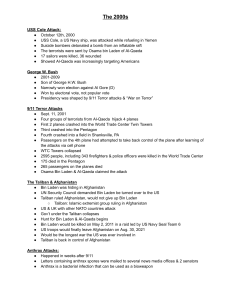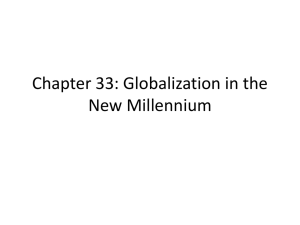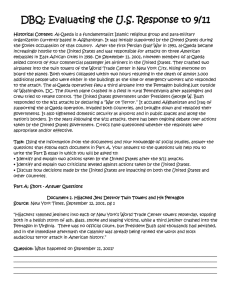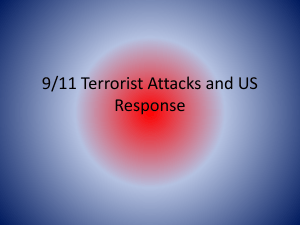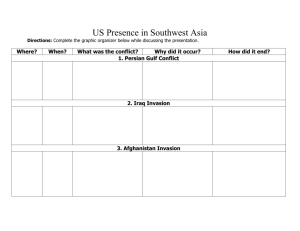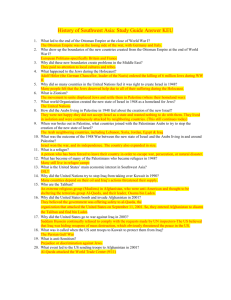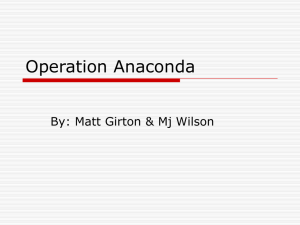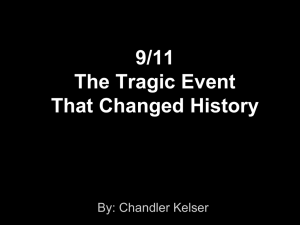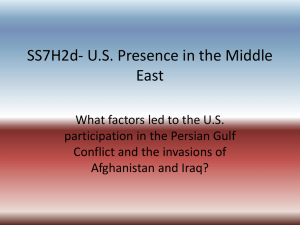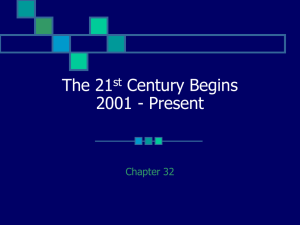Name Period______ Date______________________ STUDY
advertisement
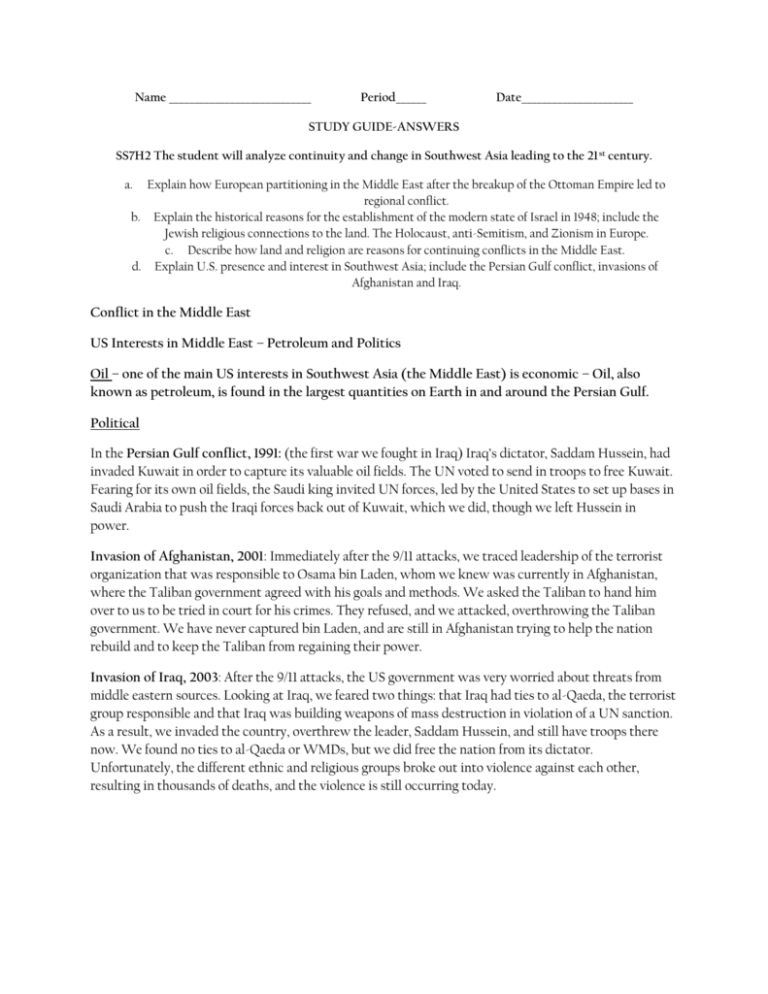
Name ____________________________ Period______ Date______________________ STUDY GUIDE-ANSWERS SS7H2 The student will analyze continuity and change in Southwest Asia leading to the 21 st century. a. Explain how European partitioning in the Middle East after the breakup of the Ottoman Empire led to regional conflict. b. Explain the historical reasons for the establishment of the modern state of Israel in 1948; include the Jewish religious connections to the land. The Holocaust, anti-Semitism, and Zionism in Europe. c. Describe how land and religion are reasons for continuing conflicts in the Middle East. d. Explain U.S. presence and interest in Southwest Asia; include the Persian Gulf conflict, invasions of Afghanistan and Iraq. Conflict in the Middle East US Interests in Middle East – Petroleum and Politics Oil – one of the main US interests in Southwest Asia (the Middle East) is economic – Oil, also known as petroleum, is found in the largest quantities on Earth in and around the Persian Gulf. Political In the Persian Gulf conflict, 1991: (the first war we fought in Iraq) Iraq’s dictator, Saddam Hussein, had invaded Kuwait in order to capture its valuable oil fields. The UN voted to send in troops to free Kuwait. Fearing for its own oil fields, the Saudi king invited UN forces, led by the United States to set up bases in Saudi Arabia to push the Iraqi forces back out of Kuwait, which we did, though we left Hussein in power. Invasion of Afghanistan, 2001: Immediately after the 9/11 attacks, we traced leadership of the terrorist organization that was responsible to Osama bin Laden, whom we knew was currently in Afghanistan, where the Taliban government agreed with his goals and methods. We asked the Taliban to hand him over to us to be tried in court for his crimes. They refused, and we attacked, overthrowing the Taliban government. We have never captured bin Laden, and are still in Afghanistan trying to help the nation rebuild and to keep the Taliban from regaining their power. Invasion of Iraq, 2003: After the 9/11 attacks, the US government was very worried about threats from middle eastern sources. Looking at Iraq, we feared two things: that Iraq had ties to al-Qaeda, the terrorist group responsible and that Iraq was building weapons of mass destruction in violation of a UN sanction. As a result, we invaded the country, overthrew the leader, Saddam Hussein, and still have troops there now. We found no ties to al-Qaeda or WMDs, but we did free the nation from its dictator. Unfortunately, the different ethnic and religious groups broke out into violence against each other, resulting in thousands of deaths, and the violence is still occurring today. 1. Define anti-Semitism. Hatred of jews 2. Define Zionism. National movement for the return of Jews to their homeland (Israel) 3. Why did the United States go to war with Iraq in 2003? U.S. feared that Iraq had ties to Al-Qaeda, and that Iraq was building weapons of mass destruction (atomic bomb, chemical weapons, etc) 4. What are the three main religions in the Middle East? Christianity, Islam, Judaism 5. Why is there conflict between Jews and Arabs? They are fighting over the same land (Israel) 6. What was the Holocaust? the murder of millions of European Jews during WWII 7. What world organization created the modern state of Israel in 1948? The United Nations 8. Who are the Taliban? The Taliban (also spelled Taleban) is a Sunni Islamic group founded by Mullah Mohammed Omar, which ruled Afghanistan from 1996-2001. The Taliban (meaning "students"), also Taleban, is a Sunni Islamist political movement that governed Afghanistan from 1996 until they were overthrown in late 2001 during Operation Enduring Freedom. 9. Why did Saddam Hussein invade Kuwait in 1990? He wanted Kuwait’s oil 10. Who was the leader of Al-Qaeda? Osama bin Laden 11. What is Al-Qaeda? Al-Qaeda (also spelled Al-Qaida) is an Islamist group founded between 1988 and 1990 by Osama Bin Laden and Mohammed Atef. 12. What is a terrorist/terrorism? a person who uses terrorism in the pursuit of political aims/the use of violence and intimidation in the pursuit of political aims. 13. What religion do the people of Al-Qaeda follow? Islam 14. What is fundamentalism? a movement or attitude stressing strict and literal adherence to a set of basic principles (in relationship to religious book/doctrine) 15. Which treaty was announced that defined the new boundaries after the fall of the Ottoman Empire? San Remo Agreement 16. Why did the United States invade Afghanistan in 2001? We wanted the Taliban to hand over Osama bin Laden so he could go to trial and they refused. 17. What was Saddam Hussein’s involvement with weapons of mass destruction? Leader in Iraq who was known for making weapons of mass destruction (he also got them to Al-Qaeda) 18. What was a result of the Ottoman Empire losing the war (WWI)? the Ottoman Empire was overthrown, and Ottoman territory was broken up into a number of smaller countries 19. Who did the Ottoman Empire join forces with in WWI? Germany and Italy 20. What is another name for the Persian Gulf War? Desert Storm 21. Define partition and liberate. Partition means to divide countries Liberate means set (someone) free from a situation, esp. imprisonment or slavery, in which their liberty is severely restricted (such as a country)

